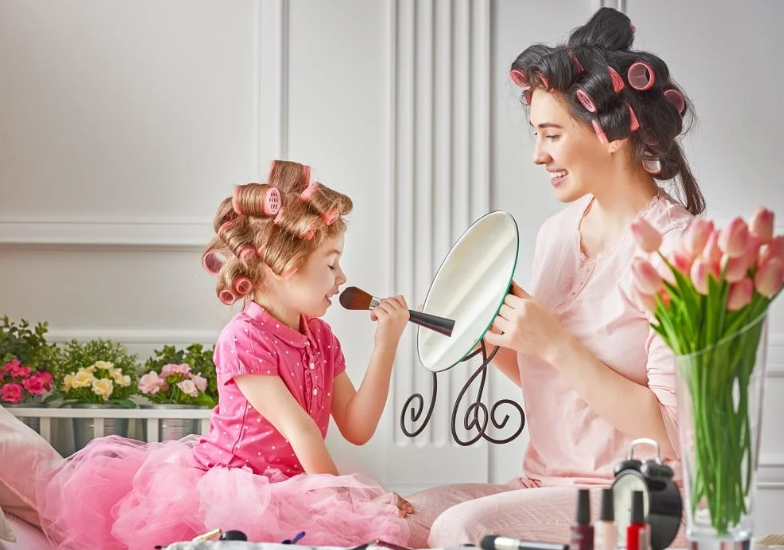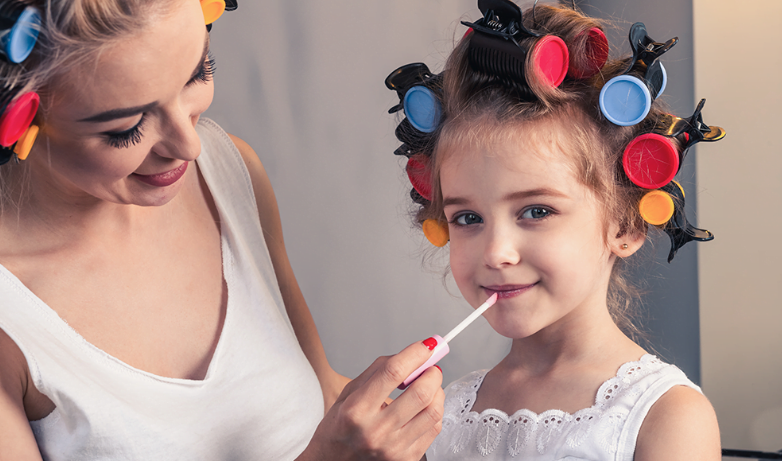Do You Know "Children's Cosmetics"?
Recently, reports about children's make-up toys have caused heated discussions. It is understood that some "children's make-up toys" including eye shadow, blush, lipstick, nail polish, etc. are very popular in the market. In fact, many of these products are produced by toy manufacturers and are only used for painting dolls, etc., and are not regulated as cosmetics. If such toys are misused as cosmetics, there will be certain safety hazards.

1. Do not use children's makeup toys as children's cosmetics
Cosmetics and toys are two different categories of products. According to the "Regulations on the Supervision and Administration of Cosmetics", cosmetics refer to the daily chemical industry that is applied to the skin, hair, nails, lips and other human body surfaces by rubbing, spraying or other similar methods for the purpose of cleaning, protecting, beautifying and modifying. product. Accordingly, determining whether a product is a cosmetic should be defined according to the method of use, site of application, purpose of use, and product attributes of the product.
Toy finishing products that are applied solely to dolls and other toys are not cosmetics, and should be managed in accordance with the regulations on toys or other products. If a product meets the definition of cosmetics, whether it is sold alone or with other products such as toys, the product is a cosmetic. Children's cosmetics should have relevant words or patterns written on the display surface of the sales package, indicating that children can use them with confidence.
2. Children's cosmetics ≠ Children's makeup
The "Regulations on the Supervision and Administration of Children's Cosmetics" clearly defines that children's cosmetics refer to cosmetics that are suitable for children under the age of 12 (including 12 years old) and have the functions of cleaning, moisturizing, refreshing, and sun protection. According to the "Cosmetics Classification Rules and Classification Catalogue" issued by the State Food and Drug Administration, cosmetics used by children aged 3 to 12 can contain claims of beauty modification and makeup removal, while cosmetics used by infants aged 0 to 3 are limited to Cleansing, Moisturizing, Hair Conditioning, Sun Protection, Soothing, Refreshing. Children's make-up belongs to the beauty modification cosmetics suitable for children aged 3 to 12.
3. Infants under the age of 3 should not use "cosmetics"
According to the "Cosmetics Classification Rules and Classification Catalog" issued by the State Food and Drug Administration, cosmetics used by infants and young children under the age of 3 do not include the category of "color cosmetics". Therefore, if the label of cosmetics declares that it is suitable for infants and young children under the age of 3, it is illegal.
Compared with adults, children under 12 years old (inclusive), especially infants under 3 years old, have immature skin barrier function, are more sensitive to stimulation by foreign substances, and are more likely to be damaged. Products such as "lipstick toys" and "blush toys" produced in accordance with general toy product standards may contain substances that are not suitable for use as cosmetic raw materials, including coloring agents with relatively high safety risks. Irritating to children's skin. In addition, such "makeup toys" may have excessive heavy metals, such as excessive lead. Absorption of excess lead can damage multiple systems of the body, for example, affect children's intellectual development.
4. What should the correct children's cosmetics look like?
Take a look at the ingredients. The formula design of children's cosmetics should follow the principle of "safety first, efficacy necessary, and minimal formula", and products that do not contain fragrances, alcohol, and coloring agents to reduce the risk of product irritation to children's skin. Many cosmetic companies have started producing children's products without chemicals. Made with natural, non-toxic ingredients, these products are safe to use on the sensitive skin of young children.

Look at the labels. The label of children’s cosmetics should indicate the full product ingredients, etc., and there should be “Caution” or “Warning” as a guide, and warning words such as “should be used under adult supervision” should be marked on the visible side of the sales package, and “food grade” should not be marked Words such as "edible" or food-related images.
Washable. Because they are less aggressive on children's skin and contain fewer additives. Children's skin is the most delicate. Based on this condition, all children's cosmetics should be washable and easy to clean, so as to minimize the damage to children's skin.
Children need us to protect, but at the same time they are free. As a decades-old cosmetics supplier, we only make safe cosmetics, whether it is used by adults or children.
Post time: Jun-08-2023

